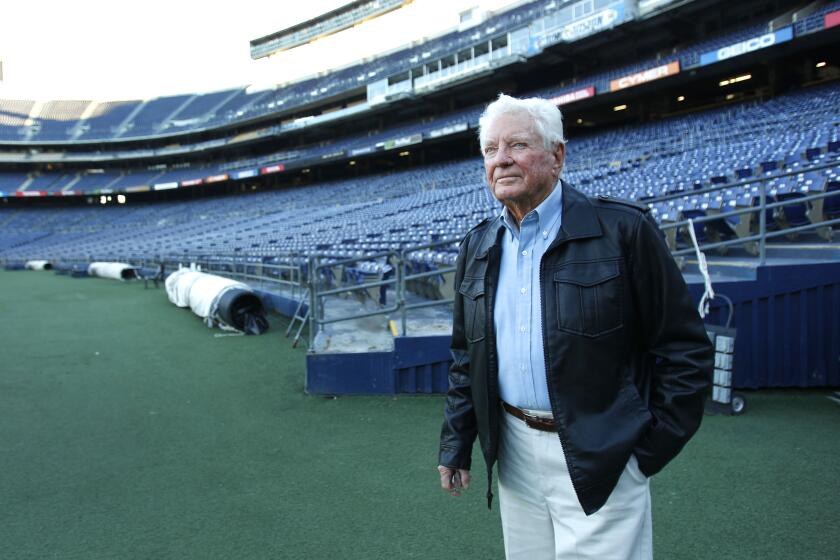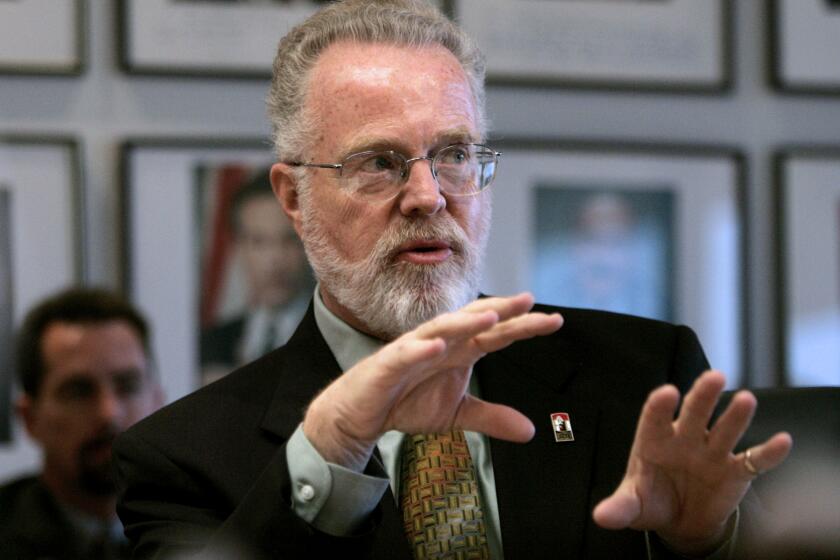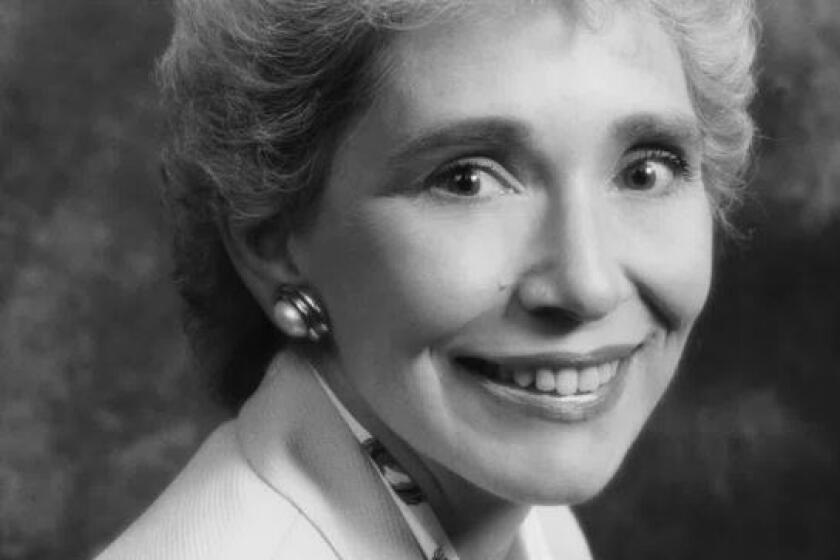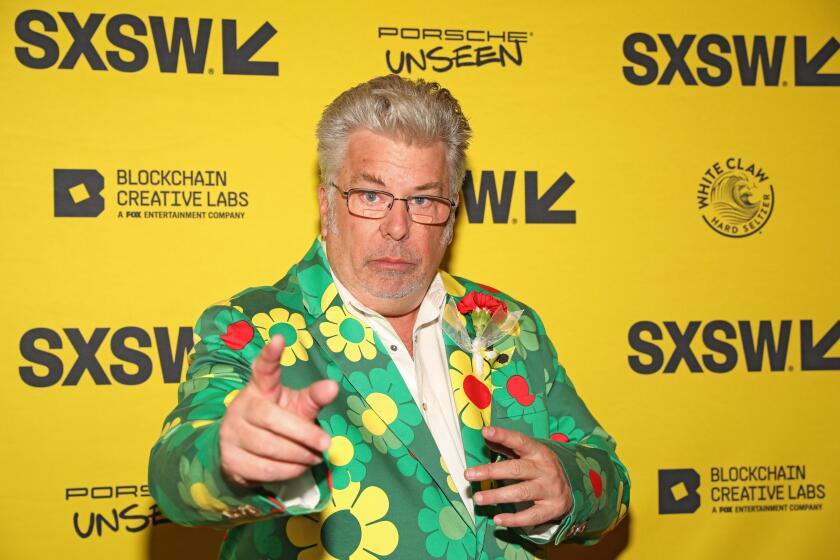Art Hughes: Educator led USD after merging of colleges
When Art Hughes arrived in San Diego in 1971, the educator faced a formidable challenge in overseeing the merger of two small Catholic colleges into the coeducational University of San Diego.
The boards of the San Diego College for Women and the San Diego College for Men and School of Law had agreed to unite, and they sought an outside educator to lead the way. They found their leader in Mr. Hughes, who at the time was in his 10th year as a professor and administrator at Northern Arizona University.
Mr. Hughes went on to a 24-year presidency at USD, steering the university through a period of unprecedented growth during which the institution’s academic reputation soared, gaining local and national prestige.
“I can’t think of anyone other than Art who could have functioned as that unifying president of the merged college,” said longtime friend Maureen King, a 1964 alumna of the College for Women. “That’s a tough, tough order. But he did it with such respect and patience, and elegance.”
Mr. Hughes died Sept. 6 of congestive heart failure at his Carlsbad home. He was 85.
Accompanying Mr. Hughes in the birth of the new university was Sister Sally Furay, already a leading campus figure who would go on to serve as provost and vice president for 25 years.
“He had a very good partner in running the university with Sister Sally Furay,” said Iris Engstrand, a USD professor of history and longtime friend of the Hughes family. “Between Art Hughes and Sally Furay, it was like the dynanmic duo. They were able to solve problems pretty fast.”
Retired USD President Mary Lyons agreed, saying the two “formed a tremendous alliance.”
“He could trust her to put great emphasis on developing faculty, and that gave him the opportunity to develop great relationships for USD and the board of trustees,” Lyons said.
Indeed, it was clear to Mr. Hughes at the beginning of his tenure that the university needed greater presence. Colleagues and friends said Mr. Hughes reached out to prominent members of the business and professional communities, encouraging them to get to know the institution as volunteers, donors and board members even though they had no prior connection to the colleges.
“The growth and the development of USD was unprecedented at the time,” said John Trifiletti, a longtime friend and colleague who worked in development at the university until 2004. “Sally’s stewardship of the academic side gave Mr. Hughes the time as president to connect with the community. He (also) hired really good people.”
By all accounts, Mr. Hughes was a much-admired, well-respected president who was accessible, authentic and, ultimately, beloved during his presidency and long after his 1995 retirement. He was known for eating in the faculty cafeteria, Engstrand said, with anyone welcome to sit at what became known as the president’s table.
During Mr. Hughes’ presidency, the university added the School of Nursing, School of Business Administration, and School of Education. Infrastructure projects included construction of the Ernest and Jean Hahn University Center, Olin Hall and Loma Hall; a two-story addition to the Helen K. and James S. Copley Library; and the expansion and renovation of the Katherine M. and George M. Pardee Jr. Legal Research Center. USD also became a Division 1 school in athletics.
Mr. Hughes was responsible for maintaining the architectural integrity and beauty of the campus, King said, ensuring that new buildings were designed in the original Spanish Renaissance style. “The pureness you see today is a reflection of Art’s brilliance,” King said. “He is responsible for how that campus looks today.”
When Mr. Hughes retired, the Alumni Association established the Author E. Hughes Career Achievement Award. Since then, more than 100 alumni have been honored for achieving distinction in their professions.
“It meant a lot to him,” Trifiletti said. “One’s achievement in one’s life or career is the ultimate impact that one’s education has.”
Author Ernest Hughes Jr. was born Nov. 4, 1929, in Hoopeston, Ill., to Nora Cleveland and Author Ernest Hughes Sr. The name “Author” wasn’t intended to be unusual; Mr. Hughes’ grandmother meant to write “Arthur” on her son’s birth certificate.
Mr. Hughes earned a bachelor’s degree in education in 1951 from Eastern Illinois University, and taught for a year near his hometown. He followed that with a master’s degree in accounting from the University of Northern Colorado, teaching at high schools in Colorado Springs and Manitou Springs. He earned a doctorate in accounting and data processing from the State University of Iowa in 1960.
In retirement, Mr. Hughes and his wife, Marge, were active members of All Hallows Catholic Church in La Jolla. King persuaded Mr. Hughes to join the boards of Scripps Mercy Hospital Foundation and the Mingei International Museum, for which he chaired the strategic planning committee.
“He was very giving of his time and wisdom, and there was a lot of wisdom to give,” King said.
Mr. Hughes maintained a high profile at USD, Lyons said, including working to create scholarship opportunities. He was a popular guest at galas and on honorary committees, Engstrand said.
Mr. Hughes is survived by his wife of 59 years, Marge; daughter Susan Kane of Rancho Bernardo; sons Greg of Clairemont, Tim of North Andover, Mass., and John of Flagstaff, Ariz.; and nine grandchildren.
A funeral service was held Sept. 12 at The Immaculata at the University of San Diego. A private inurnment took place at Holy Cross Cemetery & Mausoleum. Memorial donations may be made to the University of San Diego Scholarship Fund, Office of Annual Giving, 5998 Alcala Park, San Diego, CA 92110 or at sandiego.edu/giving.
Get Essential San Diego, weekday mornings
Get top headlines from the Union-Tribune in your inbox weekday mornings, including top news, local, sports, business, entertainment and opinion.
You may occasionally receive promotional content from the San Diego Union-Tribune.






